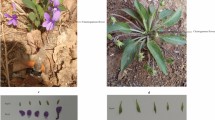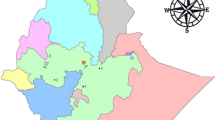Abstract
Spartina maritima is the only native cordgrass in Europe and Africa and plays an important role in European salt marshes as a primary colonizer. Many aspects of its reproductive biology are unknown. Viable seed production has been described as potentially very low to non-existent. Our primary objective was to evaluate the seed viability of S. maritima. We hypothesized that S. maritima was capable of producing viable seeds since we observed many new patches of this cordgrass. We analyzed 400 inflorescences in fruiting state from 20 different tussocks in three estuaries in the Southwest Iberian Peninsula and carried out a germination experiment. Spartina maritima was able to set moderate numbers of highly viable caryopses. Mature caryopses with embryos were recorded in 12.5 ± 2.9% of total spikelets, with high variation ranging from 0 to 45% among tussocks. Caryopses showed a high level of viability (89.0 ± 4.9%) and final germination fraction (85.3 ± 2.9%). The percentage of spikelets with all their stamens exerted was 38.3 ± 4.5%, being positively correlated with the percentage of mature caryopses with embryo, indicating that tussocks in which inflorescences reached a more advanced state of flowering when fruit set started would ultimately produce more fruits.





Similar content being viewed by others
References
Ainouche ML, Fortune PM, Salmon A, Parisod C, Grandbastien MA, Fukunaga K, Ricou M, Misset MT (2009) Hybridization, polyploidy and invasion: lessons from Spartina (Poaceae). Biological Invasions 11:1159–1173
Ayres DR, García-Rossi D, Davis HG, Strong DR (1999) Extent and degree of hybridization between exotic (Spartina alterniflora) and native (S. foliosa) cordgrass (Poaceae) in California, USA determined by random amplified polymorphic DNA (RAPDs). Molecular Ecology 8:1179–1186
Barrett SC (2015) Influences of clonality on plant sexual reproduction. Proceedings of the National Academy of Sciences 112:8859–8866
Baskin CC, Baskin JM (2014) Seeds. Ecology, biogeography, and evolution of dormancy and germination. Academic Press, San Diego
Baumel A, Ainouche ML, Levasseur JE (2001) Molecular investigations in populations of Spartina anglica C.E. Hubbard (Poaceae) invading coastal Brittany (France). Molecular Ecology 10:1689–1702
Baumel A, Ainouche ML, Misset MT, Gourret JP, Bayer RJ (2003) Genetic evidence for hybridization between the native Spartina maritima and the introduced Spartina alterniflora (Poaceae) in south-West France: Spartina x neyrautii re-examined. Plant Systematics and Evolution 237:87–97
Biber PD, Caldwell JD (2008) Seed germination and seedling survival of Spartina alterniflora Loisel. American Journal of Agricultural and Biological Sciences 3:633–638
Boedeltje G, Qzing WA, Prinzing A (2008) The trade-off between vegetative and generative reproduction among angiosperms influences regional hydrochorous propagule pressure. Global Ecology and Biogeography 17:50–58
Bromfield WA (1836) A description of Spartina alterniflora of Loiseleur, a new British species. In: Hooker WJ (ed) Companion to the botanical magazine 2. Samuel Curtis, London, pp 254–263
Burd M (1998) "excess" flower production and selective fruit abortion: a model of potential benefits. Ecology 79:2123–2132
Busey P (1976) Breeding and cytogenetics of lovegrasses (Eragrostis spp.). Ph. D. University of Arizona
Cabezudo B, Talavera S, Blanca G, Salazar C, Cueto M, Valdés B, Hernández-Bermejo JE, Herrera CM, Rodríguez-Hiraldo C, Navas D (2005) Lista roja de la flora vascular de Andalucía. Consejería de Medio Ambiente. Junta de Andalucía, Sevilla
Cambrollé J, Redondo-Gómez S, Mateos-Naranjo E, Figueroa ME (2008) Comparison of the role of two Spartina species in terms of phytostabilization and bioaccumulation of metals in the estuarine sediment. Marine Pollution Bulletin 56:2037–2042
Castellanos EM, Figueroa ME, Davy AJ (1994) Nucleation and facilitation in saltmarsh succession: interaction between Spartina maritima and Arthrocnemum perenne. Journal of Ecology 82:239–248
Castillo JM, Figueroa ME (2009) Restoring salt marshes using smalls cordgrass, Spartina maritima. Restoration Ecology 17:324–326
Castillo JM, Mateos-Naranjo E, Nieva FJ, Figueroa E (2008) Plant zonation at salt marshes of the endangered cordgrass Spartina maritima invaded by Spartina densiflora. Hydrobiologia 614:363–371
Castillo JM, Ayres DR, Leira-Doce P, Bailey J, Blum M, Strong DR, Luque T, Figueroa E (2010) The production of hybrids with high ecological amplitude between exotic Spartina densiflora and native S. maritima in the Iberian Peninsula. Diversity and Distributions 16:547–558
Contreras-Cruzado I, Infante-Izquierdo MD, Márquez-García B, Hermoso-López V, Polo A, Nieva FJJ, Cartes-Barroso JB, Castillo JM, Muñoz-Rodríguez A (2017) Relationships between spatio-temporal changes in the sedimentary environment and halophytes zonation in salt marshes. Geoderma 305:173–187
Cooper MA (1993) The status of Spartina maritima in Suffolk. Suffolk Naturalists’ Society Transactions 29:48–54
Crosby SC, Ivens-Duran M, Bertness MD, Davey E, Deegan LA, Leslie HM (2015) Flowering and biomass allocation in U.S. Atlantic coast Spartina alterniflora. American Journal of Botany 102:669–676
Curado G, Rubio-Casal AE, Figueroa E, Castillo JM (2014) Potential of Spartina maritima in restored salt marshes for phytoremediation of metals in a highly polluted estuary. International Journal of Phytoremediation 16:1209–1220
Daehler CC (1999) Inbreeding depression in smooth cordgrass (Spartina alterniflora, Poaceae) invading San Francisco Bay. American Journal of Botany 86:131–139
Daehler CC (1998) Self-fertility variation and the reproductive advantage of self-fertility for an invading plant (Spartina alterniflora). Evolutionary Ecology 12:553–568
Daehler CC, Strong DR (1994) Variable reproductive output among clones of Spartina alterniflora (Poaceae) invading San Francisco Bay, California: the influence of herbivory, pollination, and establishment site. American Journal of Botany 81:307–313
Daehler CC, Strong DR (1997) Hybridization between introduced smooth cordgrass (Spartina alterniflora; Poaceae) and native California cordgrass (S. foliosa) in San Francisco Bay, California, USA. American Journal of Botany 84:607–611
Davis HG, Taylor CM, Lambrinos JG, Strong DR (2004) Pollen limitation causes an Allee effect in a wind-pollinated invasive grass (Spartina alterniflora). Proceedings of the National Academy of Sciences of the USA 101:13804–13807
Fang X, Subudhi PK, Venuto BC, Harrison SA, Ryan AB (2004) Influence of flowering phenology on seed production in smooth cordgrass (Spartina alterniflora Loisel.). Aquatic Botany 80:139–151
Fernández-Illescas F, Nieva FJJ, de las Heras MA, Muñoz-Rodríguez AF (2011) Dichogamy in Salicornieae species: establishment of floral sex phases and evaluation of their frequency and efficacy in four species. Plant Systematics and Evolution 296:255–264
Friedman J, Barret SCH (2009) Wind of change: new insights on the ecology and evolution of pollination and mating in wind-pollinated plants. Annals of Botany 103:1515–1527
Gallego-Téva B, Curado G, Grewell BJ, Figueroa ME, Castillo JM (2018) Realized niche and spatial pattern of native and exotic halophyte hybrids. Oecologia 188:849–862
Gallego-Tévar B, Infante-Izquierda MD, Figueroa E, Nieva FJJ, Muñoz-Rodríguez AF, Grewell BJ, Castillo JM (2019a) Some like it hot: maternal-switching with climate change modifies formation of invasive Spartina hybrids. Frontiers in Plant Science 10:1–14
Gallego-Tévar B, Grewell BJ, Rousseau H, Keller J, Ainouche A, Lima O, Dréano S, Salmon A, Figueroa E, Aïnouche M, Castillo JM (2019b) Genetic structure of Spartina hybrids between native Spartina maritima and invasive Spartina densiflora in Southwest Europe. Perspectives in Plant Ecology, Evolution and Systematics 37:26–38
Gedan KB, Silliman BR, Bertness MD (2009) Centuries of human-driven change in salt marsh ecosystems. Annual Review of Marine Science 1:117–141
Groves H, Groves J (1880) Spartina x townsendii Nobis. Report of the Botanical Society and Exchange Club of the British Isles 1:37
Gustafson FG (1942) Parthenocarpy: natural and artificial. Botanical Review 8:599–654
Harper JL (1977) Population biology of plants. Academic Press, London
Kärkkäinen K, Savolainen O, Koski V (1999) Why do plants abort so many developing seeds: bad offspring or bad maternal genotypes? Evolutionary Ecology 13:305–317
Kettenring KM, Whigham DF (2009) Seed viability and seed dormancy of non-native Phragmites australis in suburbanized and forested watersheds of the Chesapeake Bay, USA. Aquatic Botany 91:199–204
Li H, An S, Zhi Y, Yan C, Zhao L, Zhou C, Deng Z, Su W, Liu Y (2008) Protogynous, pollen limitation and low seed production reasoned for the dieback of Spartina anglica in coastal China. Plant Science 174:299–309
Li L, Lan Z, Chen J, Song Z (2018) Allocation to clonal and sexual reproduction and its plasticity in Vallisneria spinulosa along a water-depth gradient. Ecosphere 9:e02070. https://doi.org/10.1002/ecs2.2070
Lonard RI, Judd FW, Stalter R (2010) The biological Flora of coastal dunes and wetlands: Spartina patens (W. Aiton) G.H. Muhlenberg. Journal of Coastal Research 26:935–946
Lyon ME (1928a) Embryoless seeds in cereals. Science 67:652
Lyon ME (1928b) The occurrence and behavior of embryoless wheat seeds. Journal of Agricultural Research 36:631–637
Mackay DB (1972) The measurement of viability. In: Roberts EH (ed) Viability of seeds. Chapman and Hall, London, pp 172–208
Marchant CJ (1967) Evolution in Spartina (Gramineae). I. The history and morphology of the genus in Britain. Journal of the Linnean Society: Botany 60:1–24
Marchant CJ (1968) Evolution in Spartina (Gramineae). II. Chromosomes, basic relationships and the problem of S. x townsendii agg. Journal of the Linnean Society: Botany 60:381–409
Marchant CJ, Goodman PJ (1969) Spartina maritima (Curtis) Fernald. Journal of Ecology 57:287–291
Martin ME, Lee TD (1993) Self pollination and resource availability affect ovule abortion in Cassia fasciculata (Caesalpiniaceae). Oecologia 94:503–509
Mobberley DG (1956) Taxonomy and distribution of the genus Spartina. Iowa State College Journal of Science 30:471–574
Morinaga T, Fukushima E (1934) Studies on the haploid plant of Oryza sativa. Japanese Journal of Botany 7:75–106
Mullins PH, Marks TC (1987) Flowering phenology and seed production of Spartina anglica. Journal of Ecology 74:1037–1048
Muñoz-Rodríguez AF, Rodríguez-Rubio P, Nieva FJJ, Fernández-Illescas F, Sánchez-Gullón E, SotoHermoso-López JM, Márquez-García B (2012) The importance of bracteoles in ensuring Atriplex halimus germination under optimal conditions. Fresenius Environmental Bulletin 21:3521–3526
Muñoz-Rodríguez AF, Sanjosé I, Márquez-García B, Infante-Izquierdo MD, Polo-Ávila A, Nieva FJJ, Castillo JM (2017) Germination syndromes in response to salinity of Chenopodiaceae halophytes along the intertidal gradient. Aquatic Botany 139:48–56
Nieva FJJ, Díaz-Espejo A, Castellanos E, Figueroa ME (2001) Field variability of invading populations of Spartina densiflora Brong. In different habitats of the Odiel marshes (SW Spain). Estuarine, Coastal and Shelf Science 52:515–527
Philbrick CT, Les DH (1996) Evolution of aquatic angiosperm reproductive systems. BioScience 46:813–826
Prasifka JR, Lee DK, Bradshaw JD, Parrish AS, Gray ME (2012) Seed reduction in prairie cordgrass, Spartina pectinata link., by the floret-feeding Caterpillar Aethes spartinana (Barnes and McDunnough). Bioenergy Research 5:189–196
Raybould AF, Gray AJ, Lawrence MJ, Marshall DF (1991) The evolution of Spartina anglica C.E. Hubbard (Gramineae): genetic variation and status of the parental species in Britain. Biological Journal of the Linnaean Society 44:369–380
Richards AJ (1997) Plant breeding systems 2nd. Chapman & Hall, London
Stephenson AG (1981) Flower and fruit abortion: proximate causes and ultimate functions. Annual Review of Ecology and Systematics 12:253–279
Sutherland S (1986) Patterns of fruit-set: what controls fruit-flower ratios in plants? Evolution 40:117–128
Van Drunen WE, Dorken ME (2012) Trade-offs between clonal and sexual reproduction in Saggitaria latifolia (Alismataceae) scale up to affect the fitness of entire clones. New Phytologist 196:606–616
Van Wijnen HJ, Bakker JP (2001) Long-term surface elevation change in salt marshes: a prediction of marsh response to future sea-level rise. Estuarine, Coastal and Shelf Science 52:381–390
Wilcock C, Neiland R (2002) Pollination failure in plants: why it happens and when it matters. Trends in Plant Science 7:270–277
Wong JXW, Costantini F, Merloni N, Savelli L, Geelen D, Airoldi L (2018) The widespread and overlooked replacement of Spartina maritima by non-indigenous S. anglica and S. townsendii in north-western Adriatic saltmarshes. Biological Invasions 20:1687–1702
Yannic G, Baumel A, Ainouche M (2004) Uniformity of the nuclear and chloroplast genomes of Spartina maritima (Poaceae), a salt-marsh species in decline along the Western European coast. Heredity 93:182–188
Acknowledgments
We thank to the management of the Odiel Marshes Natural Park for its collaboration. M.D. Infante-Izquierdo acknowledges to Ministerio de Educación, Cultura y Deporte, Spanish Government, for the FPU Grant (Ref. FPU14/06556). The authors thank Dra. Malika Ainouche for her review and comments on the initial manuscript.
Funding
Funding for these experiments was obtained from Ministerio de Educación, Cultura y Deporte, Spanish Government, for the FPU Grant (Ref. FPU14/06556)
Author information
Authors and Affiliations
Corresponding author
Additional information
Publisher’s Note
Springer Nature remains neutral with regard to jurisdictional claims in published maps and institutional affiliations.
Electronic supplementary material
ESM 1
(DOCX 18 kb)
Rights and permissions
About this article
Cite this article
Infante-Izquierdo, M.D., Castillo, J.M., Nieva, F.J.J. et al. Fruit Set, Seed Viability and Germination of the European Native Spartina maritima in Southwest Iberian Peninsula. Wetlands 40, 421–432 (2020). https://doi.org/10.1007/s13157-019-01188-1
Received:
Accepted:
Published:
Issue Date:
DOI: https://doi.org/10.1007/s13157-019-01188-1




